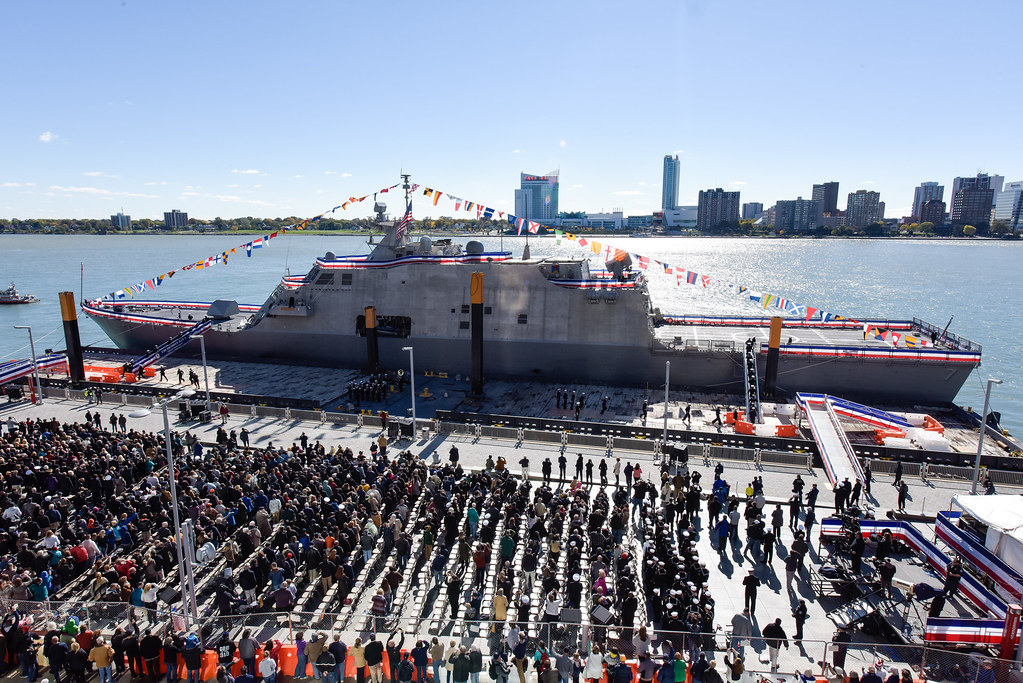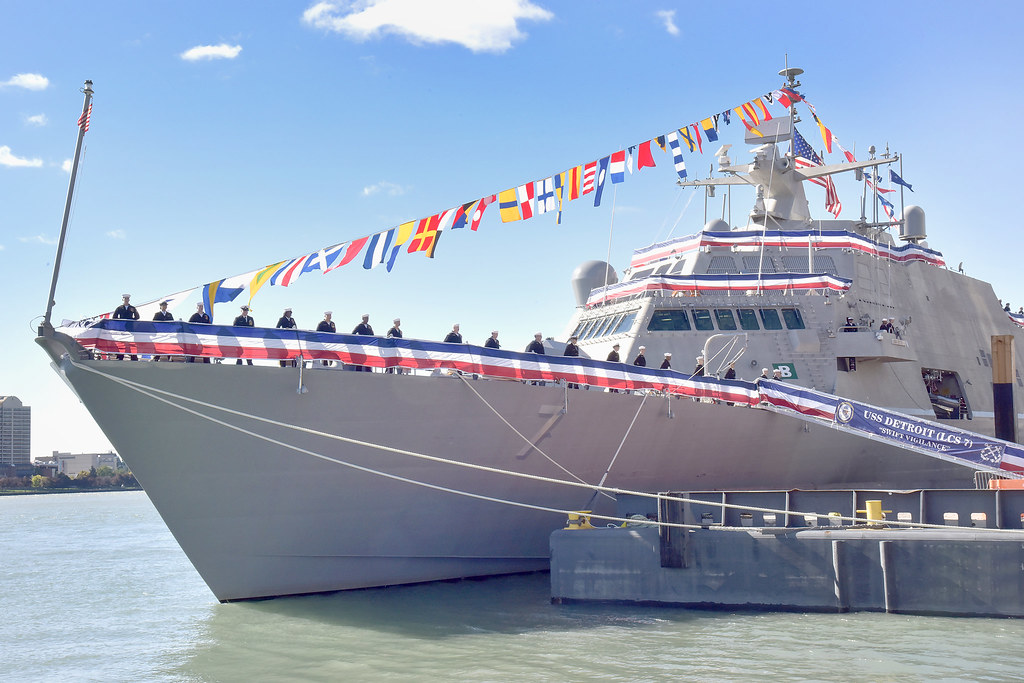
In a poignant moment of transition for the U.S. Navy and the city of Mobile, Alabama, the final Littoral Combat Ship (LCS) christening marked both the end of an era and a glimpse into a promising future.

Amidst the echoes of champagne against steel, the future USS Pierre, the last of the Independence-class LCS built by Austal USA, was celebrated, signaling a shift in the tides of naval shipbuilding.

The LCS program, which began in Mobile in 1998, has been a cornerstone for Austal USA, propelling it from a small commercial shipyard to a powerhouse in defense ship manufacturing.

The farewell to the LCS came with a mixture of nostalgia and optimism, as expressed by Austal USA President Michelle Kruger, “Christening this ship, the last Austal USA-built LCS, makes me a bit nostalgic but I know, for this company and the great team we’ve assembled, the future is bright and limitless.”

A testament to the ship’s significance and its contribution to the U.S. Navy was underscored by Rear Adm. Kevin Smith, who praised the LCS’s role in naval shipbuilding innovation and excellence.

As the final LCS christened, the USS Pierre stands as both an endnote and a beacon, illuminating the path of Austal USA’s growth and its impact on the largest manufacturing operation in Alabama’s Port City.

The company’s journey doesn’t end with the LCS program, as an expansion project looms this summer with the potential to add a third assembly hall and boost the workforce to a record 5,000 employees.

This growth reflects the company’s strategic vision and the broader defense industry’s shifting focus.

But the LCS program’s history is not without its critiques. Labeled by some as one of the military’s most controversial procurement ventures, the LCS faced scrutiny over its operational setbacks and the substantial costs incurred through the development and commissioning of the vessels.

Documented failures such as crippling breakdowns during key naval exercises and the costly repair periods have painted a complex legacy for the LCS.

The Independence variant, known for its high-speed and agile capabilities, and the Freedom variant, despite their innovative design and capabilities, struggled to fulfill their ambitious operational roles, leading the Navy to retire many of these ships far earlier than their intended service life.

As Austal USA sets its sights on new horizons, including the construction of Expeditionary Fast Transport ships (EPF), and breaks ground on a new steel manufacturing line, the company remains a significant player in the U.S. defense industry.

The christening of the LCS and the expansion of Austal’s capabilities echo a recurring theme in military procurement: the delicate balance between innovation, practicality, and fiscal responsibility.

Looking ahead, the future USS Canberra (LCS 30) represents the ongoing partnership between Austal USA and the Navy, as well as the enduring ties between the United States and Australia.

As the last LCS transitions into service and the shipyard prepares for its next chapter, the naval community watches with anticipation, understanding that the lessons learned from the LCS program will undoubtedly shape the future of naval warfare and shipbuilding for years to come.
Relevant articles:
– ‘A bit nostalgic’: Mobile’s Austal shipyard hosts final christening for Littoral Combat Ship, AL.com
– Austal celebrates christening of new Littoral Combat Ship the future USS Omaha (LCS 12), Austal
– The Inside Story of How the Navy Spent Billions on the “Little Crappy Ship”, ProPublica
– Austal USA hosts christening ceremony for the future USS Canberra (LCS 30), Austal

